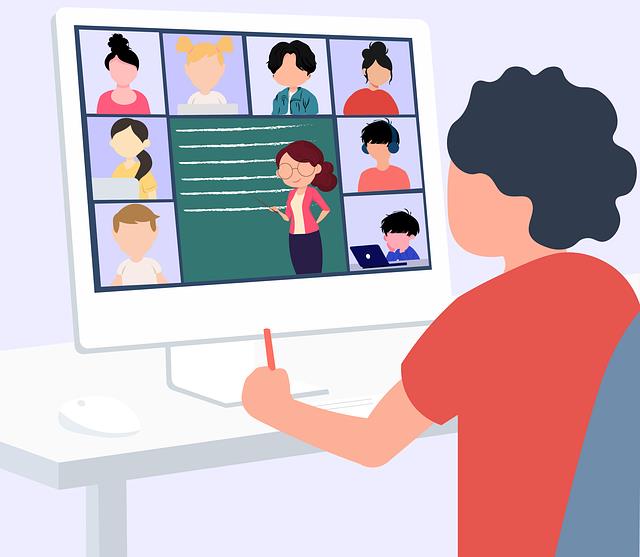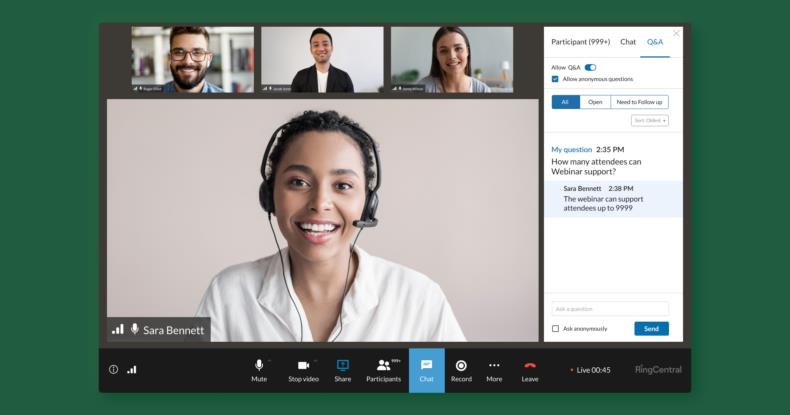
In today's digital age, captivating online students requires more than just delivering content. Educators must utilize a range of strategies to engage and motivate learners in the virtual classroom.
This article explores the top 10 strategies for captivating online students, including the use of multimedia, interactive tools, and fostering a sense of community.
By implementing these proven techniques, educators can create a dynamic and engaging online learning experience that promotes active participation and deep learning.
One effective way to enhance engagement in online learning is by incorporating multimedia elements, such as videos and interactive simulations, which can provide students with a more dynamic and immersive learning experience.
Multimedia engagement allows students to actively participate in their learning, increasing their motivation and retention of information.
Videos can be used to present complex concepts in a visually appealing and easily understandable manner, capturing students' attention and stimulating their curiosity.

Interactive simulations, on the other hand, enable students to actively explore and experiment with the subject matter, promoting a deeper understanding of the material.
By incorporating multimedia elements into online courses, educators can create a more engaging and interactive learning environment, catering to the diverse needs and preferences of today's learners.
This approach not only enhances student engagement but also fosters a sense of freedom and autonomy in the learning process.
Promoting active learning through interactive tools is a key strategy for engaging students in the virtual classroom.
By incorporating interactive tools, such as polling or discussion boards, instructors can create an environment that encourages student participation and collaboration.
These tools not only allow students to actively engage with the course material, but also foster a sense of community and enhance the overall learning experience.
Engaging Virtual Classroom
The integration of interactive tools in the virtual classroom enhances student engagement and fosters a sense of ownership over their learning experience.

Virtual classrooms offer numerous advantages such as flexibility, accessibility, and cost-effectiveness.
However, they also pose unique challenges that educators must address.
Advantages of the virtual classroom include:
- Flexibility: Students can access the virtual classroom from anywhere at any time, allowing them to learn at their own pace and schedule.
- Accessibility: Virtual classrooms provide opportunities for students with physical disabilities or geographical limitations to participate in education.
- Cost-effectiveness: Virtual classrooms eliminate the need for physical infrastructure and reduce travel expenses, making education more affordable.
Challenges of the virtual classroom include:
- Technical difficulties: Students may face connectivity issues or struggle with unfamiliar technology.
- Lack of face-to-face interaction: Building relationships and fostering collaboration can be more challenging in a virtual setting.
- Self-motivation and discipline: Students need to be self-driven and disciplined to stay focused and complete their coursework.
Overall, the virtual classroom offers numerous benefits but requires effective strategies to address the challenges and create an engaging and inclusive learning environment.
To foster student engagement and active participation, educators can utilize interactive tools such as polls, quizzes, and discussion boards in the virtual classroom. These tools provide opportunities for students to actively engage with the material and their peers, promoting a deeper understanding of the subject matter.
Interactive quizzes, for example, allow students to test their knowledge and receive immediate feedback, enhancing their learning experience. Virtual simulations take this engagement a step further by providing students with a hands-on, immersive learning experience. Through these simulations, students can apply their knowledge in a realistic context, enhancing their critical thinking and problem-solving skills.

These interactive tools not only make the learning process more enjoyable but also empower students to take ownership of their education, fostering a sense of freedom and independence in the virtual classroom.
Creating a supportive and collaborative environment is essential for fostering a sense of community in the online classroom. Building connections and fostering relationships among students can greatly enhance the online learning experience. Here are three strategies to help create a strong sense of community in the virtual classroom:
Encourage active participation: Engage students in discussions, group projects, and collaborative activities that require them to interact with one another. This helps build connections and promotes a sense of belonging.
Provide opportunities for social interaction: Incorporate social elements into the online learning experience, such as virtual meetups, icebreaker activities, or online forums where students can connect and engage with one another on a personal level.
Foster a supportive culture: Create an inclusive and supportive environment where students feel comfortable sharing their thoughts and ideas. Encourage respectful communication and provide constructive feedback to help students grow and develop.
Providing Timely and Constructive Feedback
Providing timely and constructive feedback is crucial in the online classroom as it allows students to receive immediate guidance and support, enhancing their learning experience.
By promptly addressing their questions and concerns, instructors can ensure that students stay on track and understand the material more effectively.

Additionally, constructive feedback helps students identify areas for improvement and encourages their growth and development.
Importance of Timely Feedback
The instructor's prompt and timely feedback plays a vital role in enhancing student learning and growth. Timeliness of response and feedback delivery are crucial factors that contribute to the effectiveness of the learning process. Here are three reasons why timely feedback is important:
Engagement: When instructors provide timely feedback, students feel more engaged and invested in their learning. They see that their work is being acknowledged and valued, which motivates them to continue putting effort into their studies.
Progress tracking: Timely feedback allows students to track their progress and identify areas for improvement. It helps them understand their strengths and weaknesses, enabling them to focus on areas that need more attention.
Learning reinforcement: Prompt feedback reinforces the concepts and skills taught in the classroom. It helps students understand and internalize the content better, leading to deeper learning and retention.
Enhancing Learning Through Feedback
Effective feedback, along with active student participation, can significantly enhance the learning experience. Feedback is an essential component of the education process as it allows students to understand their strengths and weaknesses, and provides guidance for improvement. By providing timely and constructive feedback, educators can help students develop a deeper understanding of the subject matter and improve their overall performance.
Furthermore, feedback plays a crucial role in improving assessment practices. It helps educators identify areas where students may be struggling and tailor their teaching strategies accordingly. Additionally, feedback creates a feedback loop, where students can reflect on their progress, set goals, and make necessary adjustments. This iterative process not only enhances learning outcomes but also fosters a sense of autonomy and ownership among students.

Therefore, it is imperative for educators to prioritize effective feedback in order to create a conducive learning environment.
Incorporating Gamification to Increase Student Motivation
By integrating elements of gamification, educators can cultivate a sense of excitement and engagement among their students, ultimately boosting their motivation to actively participate in the learning process. Gamification refers to the use of game design techniques and mechanics in non-gaming contexts, such as education. Here are some benefits and techniques of incorporating gamification in the classroom:
- Increased motivation: Gamification adds an element of fun and competition, making learning more enjoyable and motivating for students.
- Enhanced engagement: By incorporating game elements like rewards, badges, and leaderboards, students are encouraged to actively participate and strive for success.
- Personalized learning: Gamification allows for individualized learning experiences, where students can progress at their own pace and receive immediate feedback.
Incorporating gamification techniques in education not only improves student motivation but also fosters a positive learning environment where students feel empowered and inspired to achieve their academic goals.
Personalizing the Learning Experience for Each Student
Personalizing the learning experience for each student is key to promoting their academic growth and success.
By creating individualized learning plans, educators can tailor instruction to meet the unique needs and interests of their students.
This approach allows for a more engaging and meaningful learning experience, fostering a deeper understanding and retention of the material.
Individualized Learning Plans
The implementation of individualized learning plans has been shown to significantly enhance student engagement and achievement. Personalized instruction allows educators to tailor their teaching methods to meet the unique needs and learning styles of each student. By creating individualized learning plans, students are empowered to take ownership of their education and make choices that align with their interests and goals. This approach promotes a sense of freedom and autonomy in the learning process.

- Flexibility: Individualized learning plans allow students to work at their own pace and explore topics that interest them.
- Personalized support: Teachers can provide targeted support and resources to address each student's specific learning needs.
- Goal setting: Students can set and track their own learning goals, fostering a sense of responsibility and motivation.
Tailoring Instruction for All
Each student deserves a tailored instruction plan that meets their individual needs and ensures their success in the learning process. Individualized instruction, also known as differentiated learning, recognizes that students have unique abilities, learning styles, and interests. It is an approach that allows educators to customize their teaching methods and materials to support the diverse needs of their students.
By implementing individualized instruction, teachers can provide targeted support and challenge to students at their own pace. This approach promotes active engagement, motivation, and confidence in learners, leading to improved academic outcomes. It also encourages students to take ownership of their learning and develop important skills such as critical thinking, problem-solving, and self-reflection.
To create effective individualized instruction plans, teachers can use various strategies, such as pre-assessments to determine students' prior knowledge, flexible grouping to accommodate different learning levels, and providing choice and autonomy in assignments and projects.
Encouraging Collaborative Learning and Group Projects
Promoting active engagement, fostering collaboration among students allows for the development of essential teamwork skills in the context of group projects. Collaborative projects and group activities provide students with the opportunity to work together, share ideas, and learn from one another. This not only enhances their understanding of the subject matter but also prepares them for future professional endeavors where teamwork is crucial.
Incorporating collaborative learning and group projects into the curriculum has numerous benefits:
- Enhances critical thinking skills: When students work together, they are exposed to different perspectives and must critically evaluate ideas to reach a consensus.
- Builds communication skills: Collaborative projects require effective communication and active listening, helping students improve their ability to express ideas and understand others.
- Promotes problem-solving abilities: Working in groups encourages students to tackle complex problems collectively, fostering creativity and innovation.
Implementing Real-World Applications and Case Studies
Implementing real-world applications and incorporating case studies into the curriculum allows students to gain practical experience and apply theoretical knowledge to real-life situations. By utilizing real-world simulations, students can bridge the gap between classroom learning and industry practices. These simulations provide a safe and controlled environment for students to experiment, make decisions, and learn from their mistakes, all while experiencing the challenges and complexities of real-life scenarios.
Additionally, industry case studies offer students the opportunity to analyze and understand the strategies and decisions made by professionals in various fields. This not only enhances their critical thinking and problem-solving skills but also exposes them to the realities of different industries.

Offering Opportunities for Self-Reflection and Self-Assessment
Through the incorporation of self-reflection and self-assessment opportunities, educators can empower students to evaluate their own knowledge and skills, fostering a deeper understanding and continuous growth. Self-reflection activities and self-assessment techniques play a crucial role in the learning process, allowing students to take ownership of their education and become active participants in their own development.
Here are three key benefits of offering opportunities for self-reflection and self-assessment:
Enhanced self-awareness: Self-reflection activities help students gain a better understanding of their strengths, weaknesses, and areas for improvement. This self-awareness enables them to set realistic goals and make informed decisions about their learning journey.
Increased motivation and engagement: When students have the chance to assess their own progress and see tangible evidence of their growth, they are more likely to stay engaged and motivated throughout the learning process.
Development of critical thinking skills: Self-assessment techniques encourage students to think critically about their own work, analyzing their strengths and weaknesses, and identifying strategies for improvement. This process promotes higher-order thinking skills and fosters a sense of responsibility for their own learning.
Continuously Adapting and Improving Your Online Teaching Strategies
To ensure the efficacy of online education, educators must prioritize the constant adaptation and refinement of their teaching strategies. Adapting teaching methods to the ever-changing landscape of online education is crucial for engaging and motivating students. As technology evolves and student needs evolve with it, educators must stay informed and open to new approaches.
Improving strategies for online teaching involves incorporating interactive and multimedia elements into lessons, providing opportunities for collaboration and discussion, and offering personalized feedback to students. It also requires regularly assessing the effectiveness of different methods and making adjustments as necessary.

Frequently Asked Questions
How Can Online Instructors Ensure That Their Multimedia Content Is Accessible to All Students, Including Those With Visual or Hearing Impairments?
To ensure that multimedia content is accessible to all students, including those with visual or hearing impairments, online instructors can employ strategies such as providing captioning for videos, using alt text for images, and offering transcripts for audio content. Various tools and technologies are available to support these efforts and promote active learning in an online classroom.
Interactive tools and software are highly recommended for promoting active learning in an online classroom. These tools engage students, encourage collaboration, and facilitate real-time interaction. They provide opportunities for hands-on learning and help create a dynamic and immersive learning environment.
Creating engagement and building connections in an online classroom, where face-to-face interaction may be limited, requires intentional strategies. Fostering a strong sense of community can be achieved through interactive discussions, group projects, virtual office hours, and utilizing online collaboration tools.
How Can Online Instructors Provide Timely and Constructive Feedback to Students, Especially When They May Not Have the Chance to Meet in Person?
Providing effective online feedback is crucial for building rapport in virtual classrooms. Despite the lack of in-person meetings, instructors can utilize various tools and methods to deliver timely and constructive feedback to their students, ensuring an engaging and supportive online learning environment.
Are There Any Limitations or Challenges to Consider When Incorporating Gamification Into Online Courses, and How Can Instructors Address Them Effectively?
When incorporating gamification into online courses, instructors must be aware of the limitations and challenges it may present. However, by implementing effective strategies such as clear goals, meaningful rewards, and ongoing support, these challenges can be effectively addressed.
 Network marketingWork from home jobsEntrepreneurshipAffiliate marketingFinancial freedomPrivacy PolicyTerms And Conditions
Network marketingWork from home jobsEntrepreneurshipAffiliate marketingFinancial freedomPrivacy PolicyTerms And Conditions
